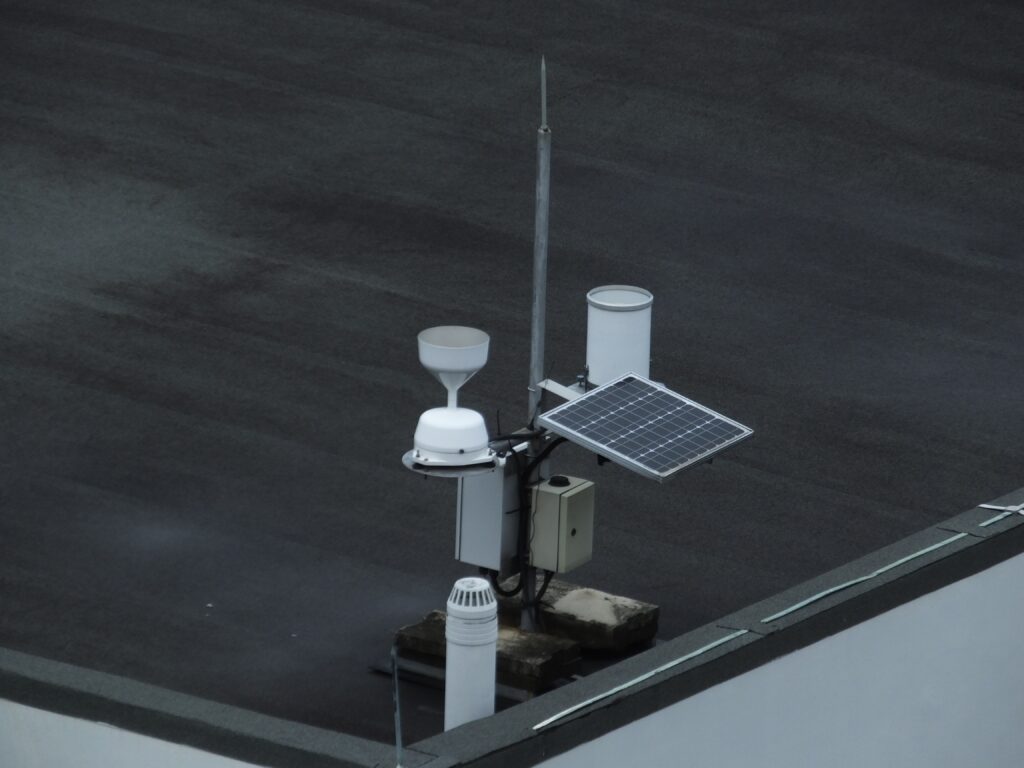Exploring the Role of Weather Monitoring Stations in Environmental Research. Explore the crucial role of weather monitoring stations in environmental research. This informative article delves into the significance of these stations, their types, functions, data collection, and analysis methods. Discover how weather monitoring stations contribute to understanding climate change, the benefits they offer, the challenges they face, and future developments in the field. Gain valuable insights into the importance of these stations and their impact on weather forecasting, climate modeling, and environmental assessments. Get a comprehensive overview of weather monitoring stations and their role in advancing scientific research.
Table of Contents
- 1 Exploring the Role of Weather Monitoring Stations in Environmental Research:
- 2 Types of Weather Monitoring Stations
- 3 Functions and Equipment:
- 3.1 Thermometers and Hygrometers:
- 3.2 Barometers:
- 3.3 Anemometers:
- 3.4 Rain Gauges:
- 3.5 Pyranometers:
- 3.6 Data Collection and Analysis:
- 3.7 Weather Monitoring Stations and Climate Change:
- 3.8 Benefits of Weather Monitoring Stations:
- 3.9 Challenges in Weather Monitoring:
- 3.10 Future Developments and Technology:
- 4 Conclusion:
- 5 FAQs:
- 5.1 Are weather monitoring stations only used for weather forecasting?
- 5.2 Can I access real-time weather data from weather monitoring stations?
- 5.3 How accurate are weather monitoring stations in predicting extreme weather events?
- 5.4 Do weather monitoring stations contribute to climate change research?
- 5.5 Can weather monitoring stations be affected by climate change?
Exploring the Role of Weather Monitoring Stations in Environmental Research:
Weather monitoring stations play a crucial role in environmental research by providing valuable data and insights into the Earth’s climate and weather patterns. These stations are equipped with specialized instruments and sensors that help collect and analyze various meteorological parameters. In this article, we will delve into the significance of weather monitoring stations, their types, functions, data collection, and analysis methods, as well as their role in understanding climate change. We will also discuss the benefits they offer, the challenges they face, and the future developments in this field.
Weather monitoring stations serve as essential tools for scientists and researchers studying weather patterns and climate change. These stations are strategically placed across different geographical locations to gather comprehensive and accurate data on various meteorological elements. The data collected from these stations helps in understanding the Earth’s climate system, predicting weather conditions, and assessing the impact of climate change.
Importance of Weather Monitoring Stations:
Weather monitoring stations are vital for several reasons. They provide crucial data for weather forecasting, allowing meteorologists to issue accurate forecasts and warnings. This information is particularly valuable for agriculture, aviation, and disaster preparedness activities. Weather monitoring stations also contribute to the study of long-term climate trends, aiding in the assessment of global climate change and its effects on ecosystems and human societies.
Read more: Top Portable Chargers Review in 2023
Types of Weather Monitoring Stations
There are several types of weather monitoring, each designed to measure specific meteorological parameters. Some common types include:
Automated Weather Stations (AWS):
Automated Weather Stations are self-contained units equipped with various sensors to measure temperature, humidity, air pressure, wind speed and direction, rainfall, and solar radiation. These stations often transmit data in real-time and are widely used in weather forecasting and research.
Climate Reference Stations:
Climate Reference Stations are specifically designed to provide long-term, high-quality climate data. These stations follow stringent guidelines and protocols to ensure measurement consistency and accuracy. They are crucial for monitoring long-term climate trends and detecting climate change signals.
Mobile Weather Stations:
Mobile Weather are portable and versatile units that can be deployed in remote or temporary locations. They are often used for specific research projects, field studies, or emergency response situations.
Upper Air Observatories:
Upper-Air Observatories use radiosondes and weather balloons to collect data on vertical profiles of temperature, humidity, and wind in the atmosphere. This information is essential for weather prediction and understanding atmospheric dynamics.
Functions and Equipment:
Weather monitoring stations are equipped with various instruments and equipment to measure different meteorological parameters. Some common equipment includes:
Thermometers and Hygrometers:
Thermometers measure air temperature, while hygrometers measure humidity levels. These instruments help understand the heat and moisture content of the atmosphere.
Barometers:
Barometers measure atmospheric pressure, aiding in weather prediction and assessing changes in air pressure.
Anemometers:
Anemometers measure wind speed, providing insights into wind patterns and directions.
Rain Gauges:
Rain gauges collect precipitation data, allowing researchers to monitor rainfall patterns and assess water resources.
Pyranometers:
Pyranometers measure solar radiation, which is crucial for studying energy balance and understanding climate variations.
Data Collection and Analysis:
Data collected by weather monitoring undergo rigorous quality control processes to ensure accuracy and reliability. Advanced technology, such as satellite-based remote sensing and data assimilation techniques, enhances data collection and analysis. Meteorologists and researchers employ statistical and computational models to interpret the data and derive meaningful conclusions. This data is crucial for weather forecasting, climate modeling, and environmental impact assessments.
Weather Monitoring Stations and Climate Change:
Weather monitoring play a pivotal role in studying climate change. By providing long-term climate data, these stations contribute to the detection and analysis of global warming trends. Scientists use this data to identify patterns, understand the impact of greenhouse gas emissions, and project future climate scenarios. Weather monitoring stations also aid in assessing the vulnerability of ecosystems and human communities to climate change, helping policymakers develop mitigation and adaptation strategies.
Benefits of Weather Monitoring Stations:
Weather monitoring offer several benefits. They enable accurate weather forecasting, which helps save lives and minimize property damage during extreme weather events. These stations provide essential data for agricultural planning, enabling farmers to make informed decisions about planting and harvesting. Weather monitoring stations also contribute to scientific research, providing valuable insights into weather patterns, climate change, and atmospheric phenomena.
Challenges in Weather Monitoring:
Despite their importance, weather monitoring face various challenges. Maintenance and calibration of instruments require significant resources and expertise. Ensuring data consistency and comparability across different stations and locations is another challenge. Weather monitoring stations also need to adapt to evolving technological advancements and data management systems. Additionally, weather monitoring in remote or inaccessible regions poses logistical difficulties.

Future Developments and Technology:
The field of weather monitoring is continuously evolving with advancements in technology. Integration of artificial intelligence and machine learning techniques can improve data analysis and prediction accuracy. Remote sensing capabilities, such as satellite-based observations, provide a broader view of weather patterns on a global scale. Enhanced data sharing and collaboration among weather monitoring networks and organizations further contribute to improving weather forecasting and climate research.
Conclusion:
Weather monitoring stations play a vital role in environmental research by collecting and analyzing meteorological data. They contribute to weather forecasting, climate change analysis, and understanding the Earth’s climate system. Despite challenges, these stations provide invaluable insights into weather patterns, helping society adapt to changing climatic conditions. With advancements in technology, weather monitoring stations are poised to make even greater contributions in the future.
FAQs:
Are weather monitoring stations only used for weather forecasting?
Weather monitoring stations serve multiple purposes, including weather forecasting, climate research, and environmental monitoring. They provide essential data for various sectors such as agriculture, aviation, and disaster management.
Can I access real-time weather data from weather monitoring stations?
Many weather monitoring stations transmit data in real time, and some organizations make this data publicly accessible through online platforms and applications.
How accurate are weather monitoring stations in predicting extreme weather events?
Weather monitoring stations, combined with advanced modeling techniques, can provide accurate predictions for extreme weather events. However, predicting the exact timing and intensity of such events remains challenging.
Do weather monitoring stations contribute to climate change research?
Yes, weather monitoring stations provide critical data for climate change research. They help identify long-term trends, assess the impact of greenhouse gas emissions, and improve climate models.
Can weather monitoring stations be affected by climate change?
Weather monitoring stations can be affected by climate change, as shifts in weather patterns and extreme weather events may impact their functionality and data collection processes. Efforts are being made to adapt and ensure the resilience of these stations in changing environments.



